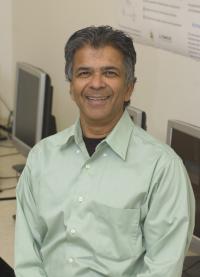 In the old days, computers were massive machines, and it took an army of programmers to keep them running. Because these older machines are very reliable and fast, however, demand declined over time for professionals trained in the technology.
In the old days, computers were massive machines, and it took an army of programmers to keep them running. Because these older machines are very reliable and fast, however, demand declined over time for professionals trained in the technology.
Flash forward 40 or 50 years, and today even microcomputers are giving way to mobile computing on smartphones and tablets. Nonetheless, some things haven’t changed: major corporations still need large, powerful mainframes capable of running thousands of transactions a minute, whether it’s to make sure the corner ATM is operational and your account is protected from fraud, or to allow you to buy airline tickets online or complete an insurance transaction.
“And the tide has turned now,” says Shan Barkataki, professor of computer science “So few universities teach mainframe technologies that now there is a big demand for students so the industry can survive.”
The term enterprise computing refers to technologies used by large companies, government, the healthcare industry, insurance companies, etc. “It’s a graybeard environment,” Barkataki says. “A lot of people who know how to do this are retiring.”
Moreover, companies using the mainframes have not established a sunset date for the software that runs on them, which is written in COBOL. They are planning to use it indefinitely and need people to maintain it as laws and business requirements change.
Last year, the health insurance giant WellPoint was concerned enough to fund a design clinic to help Barkataki and four students set up a lab to maintain interfaces with mainframe computers and develop interactive course modules in enterprise computing. Because CSUN does not own a mainframe, it was necessary to establish a system to access mainframes at other universities and computer centers. The students themselves wrote the course modules in consultation with Barkataki.
“These four students had jobs almost as soon as they graduated,” Barkataki says. “They are earning good money and have good jobs because they got exposed to mainframe technology.”
The plan is to hire four more students and have them do research in newer technologies as well as help deploy the course modules in classrooms. “It’s a good investment, and students benefit,” Barkataki says. “And we can share what we’re doing with other universities.”
